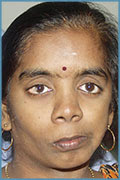www.drvaibhavshah.net
--
 |
| Dr Vaibhav Shah |
Smoking & Hair Loss.
You are aware of the risks of smoking such
as cancer, heart disease, chest complaints and strokes but it has now been
shown to have an adverse affect on your hair. This may sound rather strange but
smoking can affect the condition of your hair which may lead to Hair Loss. Research
has found a link between cigarette smoking and Hair Loss which is worrying,
especially if you are a man with a family history of baldness.
One trigger for hair loss in men is that
of hereditary: if the male members of your family went bald in their youth then
there is a good chance that you will do the same. There are other causes of
hair loss but male pattern baldness is especially common. If you are male and
smoke 20 or more cigarettes a day then you are at greater risk of going bald.
You may not be unduly bothered by this but many men are.
So how does smoking cause
hair loss?
Your hair grows from follicles – sac like
structures underneath your scalp which require oxygen, vitamins/minerals and
essential nutrients to function properly and trigger hair growth. Cigarette
smoke contains thousands of chemicals, many of them toxic, which affect all
areas of the body including the hair. This smoke negatively affects your
circulation in general which means impaired blood flow to your hair follicles. This
disrupts the normal hair growth/loss cycle which occurs on a daily basis and
results in hair thinning and eventual loss. This evidence suggests that smoking
directly impacts upon this blood supply. Other suggestions include the fact
that smoking affects the immune system which opens the body up to all sorts of
diseases and illnesses. And certain diseases damage the hair or cause hair
loss.
Another factor is ageing: hair loss is
a sign of the ageing process and this can be accelerated by smoking. Smoking
causes other signs of premature ageing such as increased lines and wrinkles and
a pale, drawn appearance so why not add baldness to this list. Male pattern
baldness is usually permanent but other types of hair loss are not and can be
reversed. If the cause of the hair loss is treated then new hair will grow.
But ,the best way of preventing hair
loss is to stop smoking. If you are trying to give up or are looking to take
that first step then visit our Stopping Smoking section. This is full of useful
information to help you do so.
Dr. Vaibhav Shah
www.vaibhavshahblog.blogspot.com
--









